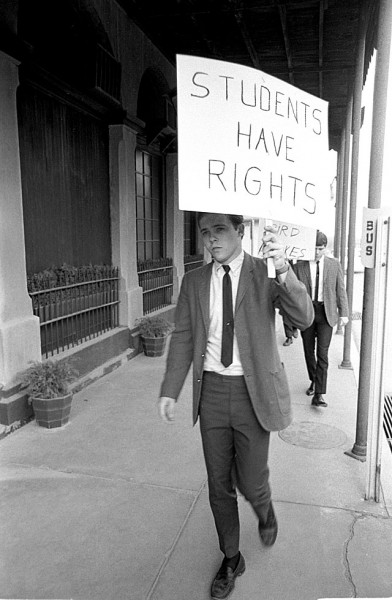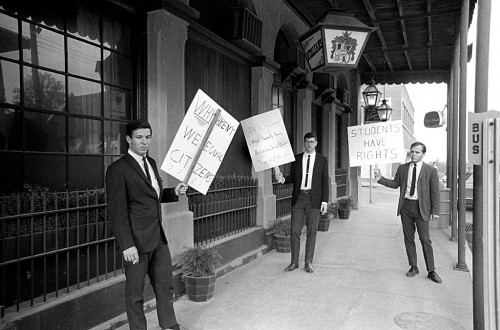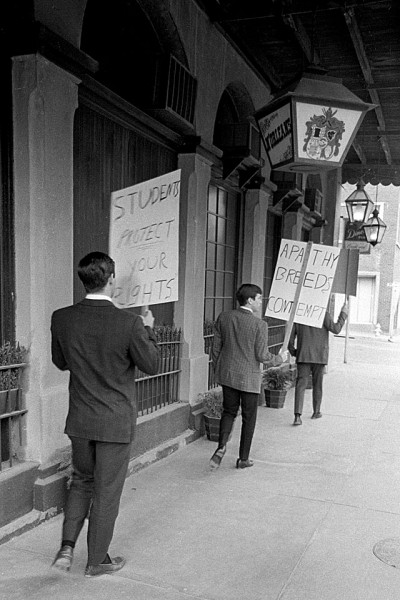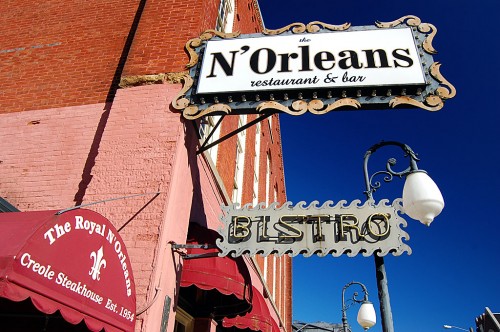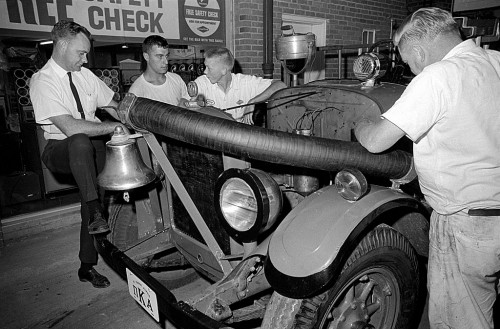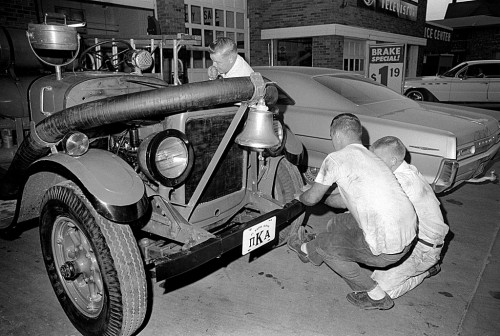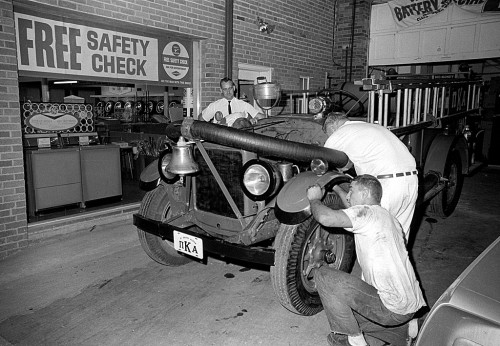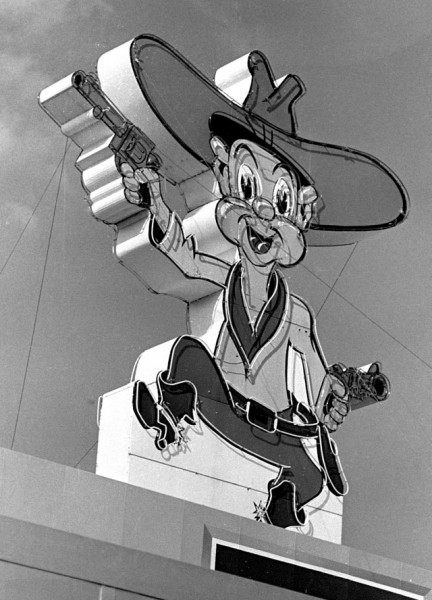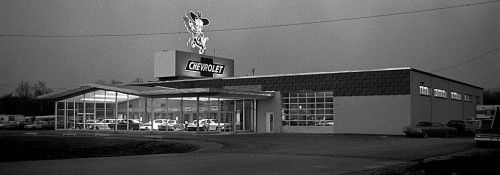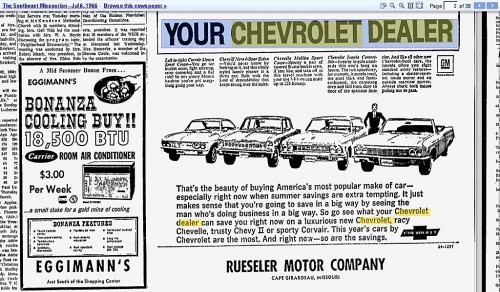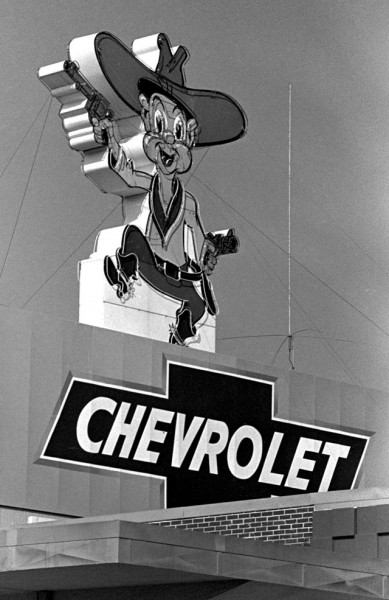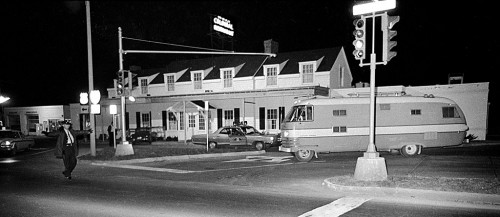 Some photos are more interesting because of the background than the subject. I noticed the Colonial Restaurant in these photos of a crash at Kingshighway and Broadway. I always think of the establishment as being the Colonial TAVERN, but the name must have changed sometime toward the end of the 1950s, based on newspaper stories.
Some photos are more interesting because of the background than the subject. I noticed the Colonial Restaurant in these photos of a crash at Kingshighway and Broadway. I always think of the establishment as being the Colonial TAVERN, but the name must have changed sometime toward the end of the 1950s, based on newspaper stories.
Sports car plows into building
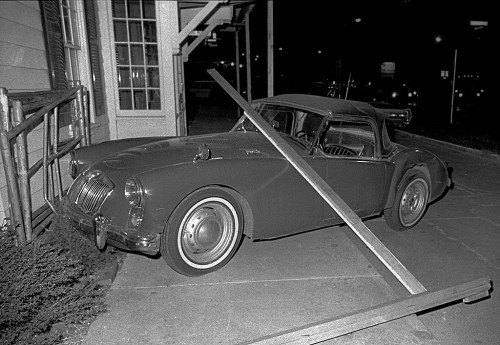 I couldn’t find any newspaper stories about the wreck, nor do I know when the pictures were taken. The car doesn’t look like it sustained much damage. It doesn’t have the typical dimples in the windshield caused by an unbelted driver.
I couldn’t find any newspaper stories about the wreck, nor do I know when the pictures were taken. The car doesn’t look like it sustained much damage. It doesn’t have the typical dimples in the windshield caused by an unbelted driver.
Cape police and a state trooper
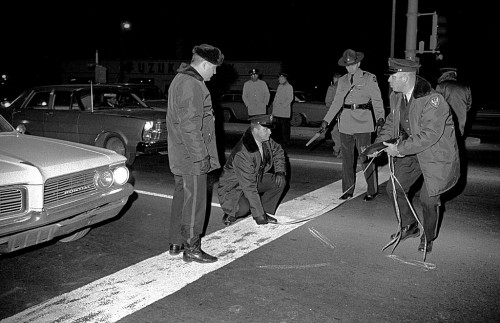 I count at least six police officers and a State Trooper working the wreck. It must have been a slow, if cold, night
I count at least six police officers and a State Trooper working the wreck. It must have been a slow, if cold, night
One of the first lessons I learned as a news photographer that everything goes smoothly until you get one more cop on the scene than they need to work the incident. He looks around and decides that his job is to hassle the photographer. These guys must not have hit that point, because I don’t remember any conflicts.
Colonial Restaurant being remodeled
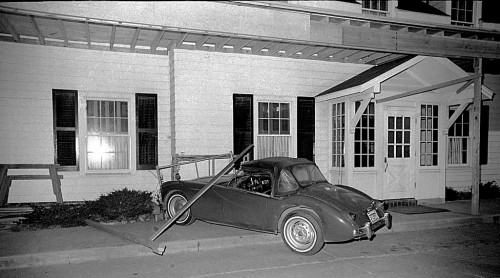 It looks like the building was being remodeled. There’s fresh lumber and framing visible, and the car knocked down one of the temporary supports.
It looks like the building was being remodeled. There’s fresh lumber and framing visible, and the car knocked down one of the temporary supports.
In 1936, Albert Haman and Harley Estes spoke in favor of incorporating an area west of the city limits, as the first step in bringing the area into the Cape Girardeau city limits. Haman owned a restaurant at the intersection of Cape Rock Dr. and Highway 61. Estes represented the Simpson Oil Co., which owns the Colonial Tavern. There are five gasoline stations in the area, but no schools or churches.
Missourian advocates expanding city
A Missourian editorial in 1946 advocated extending the city limits to take in the entire stretch of Hwy 61 to enable the city to zone the property and “thus prevent it from becoming covered with undesirable structures….Pigpens and beer joints … have long infested the Alvarado-Colonial Tavern intersection…. Unless this is done Hwy 61 from the southern city limits to the northern limits may be expected to become a hodgepodge of shacks and dumps…”
Coroner Don Kremer
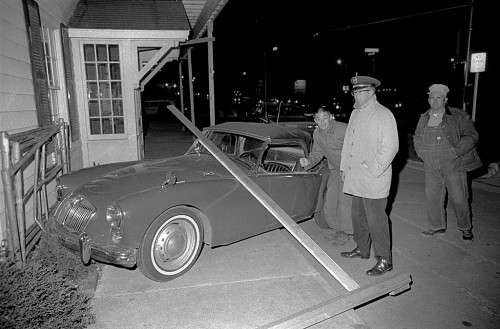 Coroner Don Kremer is the fellow next to the car. In addition to being the coroner, he was also a commercial photographer who made a sideline of shooting wrecks for insurance companies, so his presence doesn’t necessarily mean this was a fatality.
Coroner Don Kremer is the fellow next to the car. In addition to being the coroner, he was also a commercial photographer who made a sideline of shooting wrecks for insurance companies, so his presence doesn’t necessarily mean this was a fatality.
Kremer made the news himself in 1970, when he gunned down a young woman, then committed suicide by driving into a bridge abutment at high speed. (If you follow the link, you’ll have to zoom out and turn your head sideways to read the story. Google has the microfilm rotated to the left.) Investigators say that tire tracks indicated that he aimed his car so that the driver’s side would take the brunt of the impact.
Kremer’s wife said that he had been diagnosed with a malignant brain tumor and had been given two months to live.

